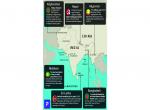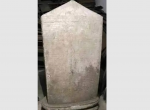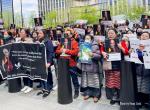Majumdar, R.C., Ancient Indian Colonies in the Far East, Volume I: Champa, Greater India Society Publication, Lahore: The Punjab Sanskrit Book Depot, 1927.
The book deals with the Indian connection with the ancient kingdom of Champa. Majumdar introduces the land of Champa and in Part I, chronicles the foundation of the kingdom of Champa, and the history of the Hindu dynasties of Champa. In Part II, he discusses religious evolution in Champa: Saivism, Vaishnavism, the cult of Brahma, minor deities of the Hindu pantheon and Buddhism. It also discusses society, architecture and sculpture in Champa.
Download here: https://www.vifindia.org/sites/default/files/145640749-Ancient-Indian-Colonies-in-the-Far-East-Vol-1-1927.pdf
Majumdar, R.C., Ancient Indian Colonies in the Far East, Volume II: Suvarnadvipa, Dacca, 1937.
This is a sequel to the previous book and deals with the political history of India’s connection with Suvarnadvipa. The author discusses the beginning of Hindu influence in the Far East, the Shailendra Empire, the Indo-Javanese Empire, and the downfall of the Hindu kingdoms in Suvarnadvipa.
Download here: https://www.vifindia.org/sites/default/files/145639880-Ancient-Indian-Colonies-in-the-Far-East-1937.pdf
Mookerji, Radhakumud, Asoka, London: Macmillan & Co., 1928
The book deals with various aspects related to the life and times of Emperor Asoka: his early life and family, history of Asoka’s rule, his administration, religion and social conditions during his time, and monuments related to him. The book also contains the text, translation and annotation of Asokan inscriptions.
Download here: https://www.vifindia.org/sites/default/files/145640733-Asoka-1928.pdf
Majumdar, R.C., Corporate Life in Ancient India, Poona: Oriental Book Agency, 1922.
R. C. Majumdar writes about the spirit of cooperation in ancient India as attested by our history. He examines corporate activities in economic, political, religious and social spheres in ancient India.
Download here: https://www.vifindia.org/sites/default/files/145640372-Corporate-Life-in-Ancient-India-1922.pdf
Sister Nivedita, Cradle Tales of Hinduism, Longmans Green & Co., 1916.
This is a classic collection of Indian tales of yore written for young readers by Sister Nivedita in her inimitable style. It contains stories from the epics and other popular ancient tales.
Download here: https://www.vifindia.org/sites/default/files/139221799-Cradle-Tales-of-Hinduism-1907.pdf
Coomaraswamy, Ananda, The Dance of Śiva: Fourteen Indian Essays, New York: The Sunwise Turn, 1918.
This collection of essays by the stalwart philosopher of art, Ananda K. Coomaraswamy, begins with his essay that addresses what India has contributed to human welfare. Subsequent essays deal with the Hindu view of art, the state of beauty, Indian music, status of Indian women, and several other themes. It even has an essay on Nietzsche.
Download here: https://www.vifindia.org/sites/default/files/139026040-Dance-of-Shiva-1918.pdf
Dutt, R.C., The Economic History of India: Under Early British Rule, vol. I, Kegan Paul, 1902.
This is the classic study by Romesh Chunder Dutt on how India was impoverished by British rule from the time of the rise of British power in India in 1757 to the accession of Queen Victoria and the famine of 1837.
Download here: https://www.vifindia.org/sites/default/files/139217913-Economic-Hist-of-India-Under-Early-British-Rule-Vol-1-1902.pdf
Coomaraswamy, A. K., Essays in National Idealism
A collection of valuable essays by one of the foremost Indian nationalist thinkers and philosophers of art, the book contains essays on Indian nationalism, art, education, music, Swadeshi and much more.
Download here: https://www.vifindia.org/sites/default/files/139209140-Essays-in-National-Idealism-1909.pdf
Sastri, K. A. Nilkanta, ed., Foreign Notices of South India: From Megasthenes to Ma Huan, Madras: University of Madras, 1939.
This is a valuable collection of primary source material—foreigners’ accounts of southern India and Ceylon—compiled and edited by the stalwart K. A. Nilkanta Sastri. In Sastri’s own words, it is a “source-book of Early South Indian History”. It contains English translations of writings by Greek, Latin, Arabic, Chinese, and Persian authors.
Download here: https://www.vifindia.org/sites/default/files/139217937-Foreign-Notices-of-South-India-1939.pdf
Swami Vivekananda, From Colombo to Almora: Seventeen Lectures, Madras: Vyjayanti Press, 1897.
This is the rare, original 1897 edition of the book (copy preserved in the library of the University of Michigan). This is a collection of the famous lectures delivered by Swami Vivekananda in the then British India after his return from the West in 1897. The current edition published by Advaita Ashrama is titled Lectures from Colombo to Almora and contains 29 lectures that he gave in Ceylon, and southern, northern and eastern (including present-day Bangladesh) India. This rare edition, however, contains only 17 lectures, which he delivered mainly in southern India and Ceylon, and one lecture each in Calcutta and Almora. Unlike in the current edition, where the lectures have been given a title, in this rare edition, they are listed according to the towns in which they were delivered.
Download here: https://www.vifindia.org/sites/default/files/139216160-From-Colombo-to-Almora-Seventeen-Lectures-of-Swami-Vivekananda-1897.pdf
Sarkar, Benoy Kumar, The Beginning of Hindu Culture as World Power (AD 300-600), Shanghai: The Commercial Press, 1916.
Noted nationalist sociologist of early twentieth century, Benoy Kumar Sarkar traces the rise of Hindu culture as world power. He focuses on the political rise (the Guptas), racial aspect (capacity for assimilation), religious eclecticism (the Puranas and the rise of different sects), and literary accomplishments (Kalidasa).
Download here: https://www.vifindia.org/sites/default/files/139211584-Hindu-Culture-as-a-World-Power-1916.pdf
Radhakrishnan, S, The Hindu View of Life, London: George Allen & Unwin, 1927.
This is a collection of four lectures delivered by Radhakrishnan at Manchester College, Oxford in 1926. These lectures are on: (1) the nature and content of religious experience; (2) the Hindu attitude towards the issue of conflict of religions; and (3) Hindu dharma.
Download here: https://www.vifindia.org/sites/default/files/145639119-Hindu-View-of-Life-1927.pdf
Sastri, K. A. Nilkantha, History of Sri Vijaya, Madras: University of Madras, 1949.
This book deals with the Sri Vijaya Empire of Sumatra. It deals with the early history of the empire, the empire in the 8th century, that is, the rule of the Shailendras, the Arab and Chinese evidence on the empire in the 9th and 10th centuries, Sri Vijaya and the Cholas, the last days and fall of the empire in the 12th and 13th centuries, and Sri Vijaya art.
Download here: https://www.vifindia.org/sites/default/files/139218226-History-of-Sri-Vijaya-1949.pdf
Chatterji, B. R., India and Java, Greater India Society’s Bulletin No. 5, Calcutta: Prabasi Press, 1933.
This book gives a general view of the Indian culture of Java and Sumatra. It gives an outline of Indo-Javanese history and also deals with Sri Vijaya (the Empire of the Shailendra monarchs of Sumatra), Java and Sumatra in Indian literature, the Ramayana in Java, the fall of the last Hindu kingdom of Java, the Mahabharata and the Wayang in Java, and Tantrism in Cambodia, Sumatra and Java.
Download here: https://www.vifindia.org/sites/default/files/145642249-India-and-Java-1933.pdf
Banerjee, Gauranganath, India as Known to the Ancient World, London: Oxford University Press, 1921.
This book surveys the influence of ancient Indian civilization on the manners, religion and customs of the people of the Malaya Archipelago, Indo-China, and also Central Asia. The book explores ancient India’s contacts with Western Asia, Egypt, Greece, Rome, Central Asia, China, ‘Further India’, Indonesia, Java, Sumatra, Bali and Borneo.
Download here: https://www.vifindia.org/sites/default/files/145642481-India-as-Known-to-the-Ancient-World-1921.pdf
Pococke, E., India in Greece, or Truth in Mythology, London: Griffin & Co. 1852.
The author digs into a gold mine of evidence to suggest Indian presence in and cultural influence on ancient Greece that explains the so-called “mythological” or fabulous tales related to the early history of Greece. He makes a plea for going beyond philological affinities between Indian and Greek languages, and unearthing real history.
Download here: https://www.vifindia.org/sites/default/files/151281347-India-in-Greece-1852.pdf
Majumdar, R.C., Kambuja-Desa or an Ancient Hindu Colony in Cambodia, University of Madras, 1944
R. C. Majumdar’s classic study on Kambujadesha deals with the beginning of Indian colonies in Cambodia, the kingdom of Fu-nan, the rise of Kambujadesha, the consolidation of the Kambuja kingdom, the rise of Angkor, and the Kambuja Empire.
Download here: https://www.vifindia.org/sites/default/files/145799028-Kambujadesa-1943.pdf
Lévi, Sylvain, Le Théâtre indien, Paris: Émile Bouillon, 1890 (Indian Drama)
This book in the French language deals with the ancient Indian dramatic tradition. The author discusses various aspects like traits of the art of drama, various treatises on the subject, the poetics of drama, the history of dramatic literature, the aesthetics of drama, the origins of drama, Greek influence, and dramatic practices. The book also has a chapter on modern and contemporary dramatic practices like yatra. The author also provides a bibliography on the subject.
Download here: https://www.vifindia.org/sites/default/files/145802754-Le-Theatre-Indien-Indian-Theatre-1890.pdf
Zimmer, Heinrich, Myths and Symbols in Indian Art and Civilization
The author discusses myths and symbols in Indian art. He touches upon themes like Eternity and Time; the mythology related to Vishnu, Shiva and the devi; and animal vehicles of deities and other natural elements like serpents, birds, elephants, lotus, and sacred rivers.
Download here: https://www.vifindia.org/sites/default/files/145804581-Myths-Symbols-in-Indian-Art-and-Civilization-1945.pdf
Mookerji, Radhakumud, Nationalism in Hindu Culture, London: Theosophical Publishing House, 1921.
This book deals with the ancient Hindu conception of patriotism. It discusses the ideal of ‘patriotism’ as well as ‘nationalism’ as found in Sanskrit literature, and the bearing of Sanskrit literature on national life. Two chapters are devoted to the significance of the Hindu institution of pilgrimage and pilgrimage as a factor fostering patriotism and nationalism in ancient India. The author also deals with nationalism as a Hindu political ideal.
Download here: https://www.vifindia.org/sites/default/files/139217411-Nationalism-in-Hindu-Culture-1921.pdf
Naoroji, Dadabhai, Poverty and Un-British Rule in India , London, 1901
This is the classic study by one of the early nationalists, Dadabhai Naoroji, on how the British government impoverished India. Naoroji demonstrated with statistics how the economic drain of India and the flow of resources to Britain was a scourge and went against the principles of justice that the British claimed to uphold.
Download here: https://www.vifindia.org/sites/default/files/povertyunbritish00naoruoft.pdf
Sarkar, Jadunath, Shivaji and His Times, London : Longmans Green & Co., 2nd ed., 1920.
This is Jadunath Sarkar’s classic study of the life and times of Shivaji based on an exhaustive analysis of Persian, Marathi, Hindi, English, Dutch and Portuguese sources.
Download here: https://www.vifindia.org/sites/default/files/145808089-Shivaji-and-His-Times-1920.pdf
Pal, Bipin Chandra, Speeches of Srj. Bepin Chandra Pal (Delivered at Madras) , Madras: Ganesh & Co. 1907.
This is a collection of speeches delivered by nationalist leader Bipin Chandra Pal in Madras.
Download here: https://www.vifindia.org/sites/default/files/139212639-Speeches-Delivered-at-Madras-1907.pdf
Durant, Will, The Case for India , New York: Simon & Schuster, 1930.
This is a testimony by noted scholar Will Durant of his first-hand experience in India. He records his shock at the economic exploitation of the British—which he called “the greatest crime in all history”. He records his personal engagement with India, a few civilizational aspects, the rise of nationalist politics, especially Gandhi and the British response to the charge of imperialism.
Download here: https://www.vifindia.org/sites/default/files/139221701-The-Case-for-India-1930.pdf
Radhakrishnan, S., The Philosophy of the Upanisads , (with a Foreword by Rabindranath Tagore), London: George Allen & Unwin, 1924.
This is a reprint of the section on the Upanisads from Radhakrishnan’s classic two-volume Indian Philosophy.
Download here: https://www.vifindia.org/sites/default/files/145810763-The-Philosophy-of-the-Upanisads-1924.pdf
Sister Nivedita, The Web of Indian Life , London: William Heinemann, 1904.
This is a collection of Sister Nivedita’s essays on Indian society and culture, written mainly from a sociological point of view. She touches upon various aspects, including Indian women, the epics, caste system, synthesis of Indian thought, stories of Shiva, Islam in India, and Indian pilgrimage.
Download here: https://www.vifindia.org/sites/default/files/139221265-The-Web-of-Indian-Life-1904.pdf
Tilak, Bal Gangadhar, Bal Gangadhar Tilak: His Writings and Speeches , (With an Appreciation by Babu Aurobindo Ghose), Madras: Ganesh & Co., 3rd ed., 1922.
This is a collection of Bal Gangadhar Tilak’s speeches and writings. It covers a wide range of topics from the character of Indian languages, Bharata Dharma Mahamandala, Shivaji, and Ali Brothers to Swadeshi, national education, the Congress compromise, self-government, Home Rule, Karma Yoga and Swaraj, and other topics of national interest.
Download here: https://www.vifindia.org/sites/default/files/139221794-Tilak-Speeches-Writings-With-Foreword-3rd-Ed-1922.pdf
Dikshitar, V. R. Ramachandra, War in Ancient Indi a, Macmillan & Co. 1944.
This valuable book deals with various topics related to war in Ancient India, like the psychological background of war, the laws and ethics of war in ancient India, different kinds of victory like dharma vijaya, asura vijaya, lobha vijaya, the weapons of war used in ancient India, army and army divisions & departments, strategy and tactics of war, aerial and naval warfare, diplomacy and war, and diplomatic agents like ambassadors and spies. War music, flags of ancient India, and so on, have been added as appendices.
Download here: https://www.vifindia.org/sites/default/files/145812085-War-in-Ancient-India-1944.pdf
Image Source: https://cdn.pixabay.com/photo/2020/01/09/16/30/book-4753250_960_720.png










Post new comment